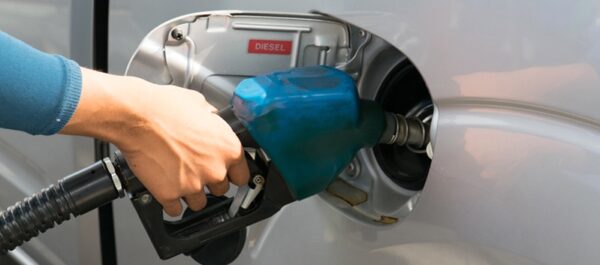5.3. That’s the average mileage of class 8 trailer-tractors across America.
Modifying Driving Habits
The most effective way to improve your mileage is to improve the driving nut behind the wheel. In other words, drive more efficiency.
So how do you do that?
Stay at or below the speed limit. At a speed limit of 65, driving 70 miles per hour will only save you four seconds per mile, however you lose nine percent more fuel going at a speed that is 5 mph over limit. Increasing the speed to 75 mph, you look at an even bigger efficiency loss. At that speed, trucks lose upwards of 15 percent of their fuel economy while only shaving seven seconds off the commute per mile.
With diesel prices currently sitting around $2.40 a gallon, traveling at 70 mph versus the posted 65 mph speed limit can increase gas costs by $14,221 per year, while increasing your commute time by only 54 minutes. Through proper planning, you can significantly save more while staying within your daily drive limits.
Owner-operator Leonard “Lennie” Bower advises gentle acceleration and braking to maximize fuel efficiency. You not only risk loss of control due to tire slip but your truck will consume more gas the faster you want to get off the line. It’s not worth it. Bower commonly gets 6.4 miles per gallon, mpg for short, during his shifts.
In addition, owner-operator Gary Adams of Garland, Texas, keeps his rpm between 1,200 and 1,500 when shifting. Though he commonly drives at speed limit, he claims he would rather go below speed limit if time restrictions weren’t so tight. Adams regularly reports 6.7 – 6.9 mpg in his tractor-trailer.
Maintaining Equipment Integrity
How well your equipment is maintained can make a difference in gas mileage. Improving and implementing maintenance routines, such as tire pressure checks and changing filters, can slowly add up to a significant change.
Kevin Koorenny, an owner-operator from Redlands, California, has owned a 1996 Freightliner Classic since he started driving six years ago. When he started, his average fuel mileage was 4.5 mpg, but over time he changed his driving and maintenance habits and increased his efficiency to 6.5 mpg. “I keep my tires inflated at the level the manufacturer recommends,” Koorenny says. “I don’t run with 95 pounds of air in my tires like a lot of people do. I check inflation every week.”
Checking tire pressure can quickly pay off in cost reduction from gas fill-ups. Every ten psi under the tire’s recommended inflation reduces fuel efficiency by at least one percent. Because an underinflated tire has a larger contact patch with the road, increased friction will lead to more fuel consumption to maintain a similar speed.
Last of all, change your air and fuel filters at regular intervals and inspect your air hoses and clamps to minimize air leaks that can reduce fuel efficiency.
Cruise Control and Out of Routes Miles
Use cruise control and use it often. People aren’t able to keep a steady speed – we use a lot of gas speeding up and slowing down because maintaining a specific speed is hard. Using cruise control will sustain your speed without the small peaks and valleys of human error.
Route management is another important factor in fuel economy. Kenworth, an American manufacturer of class 8 trucks, estimates that out-of-route miles may account for 3 to 10 percent of a driver’s total mileage each year. For example, if an operator drives 100,000 miles a year, then 3 percent – or 3,000 miles – are out-of-route. At 6 mpg, driving 3,000 miles will require 500 extra gallons of fuel, which would amount to $1,000-$1,500 additional fuel costs.
So, drive smart and drive safe.

